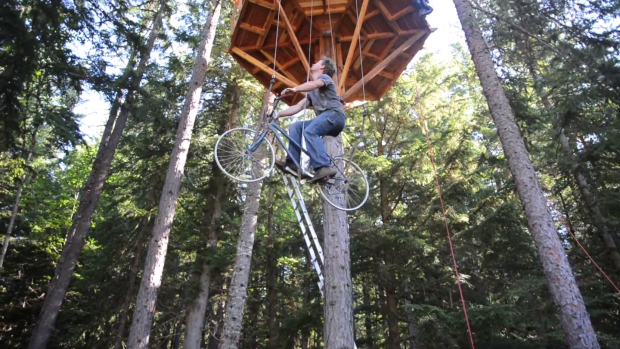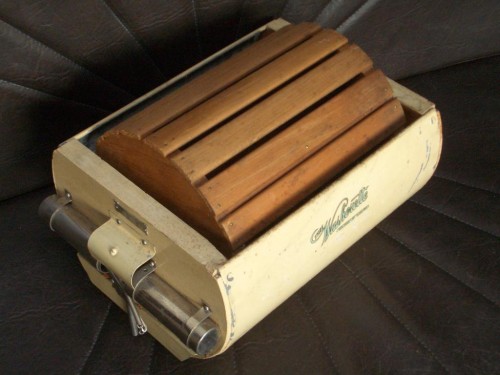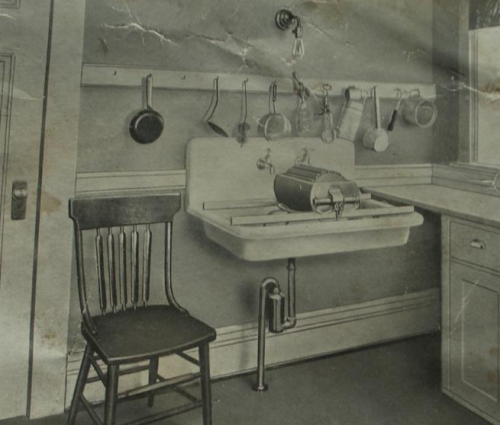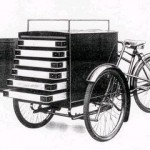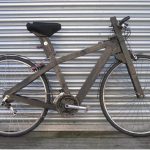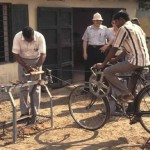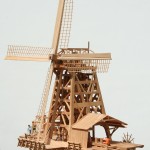Ethan Schlussler of Sandpoint, Idaho, built this clever bicycle-powered treehouse elevator to make it easier to reach his nearly 30-foot-high treehouse. “I got tired of climbing a ladder six and a half million times a day, so I made a bicycle powered elevator to solve this problem,” he writes. See and read more at Make. More pedal powered machines.
Bike-Powered Treehouse Elevator
High-tech Solar Cooker
“Instead of a big solar oven that adapts to our conventional idea of cooking, The GoSun requires a bit of adaptation of our diet. But that really is a feature, not a bug; it can be a healthier diet with less food waste.” Read more: GoSun stove reinvents solar cooking.
Water-Powered Fire Alarm
 Mid-nineteenth century, water motors operated by tap water became a valuable power source in addition to hand and foot powered machines. Most of these small-scale water motors for indoor use were Pelton turbines, which are up to 90% efficient regardless of their size.
Mid-nineteenth century, water motors operated by tap water became a valuable power source in addition to hand and foot powered machines. Most of these small-scale water motors for indoor use were Pelton turbines, which are up to 90% efficient regardless of their size.
A demonstration of how water power may be used efficiently even on a very small scale is the water-powered fire alarm. The device is still for sale today. Buildings protected by sprinkler systems often have outside alarm bells that are activated by very small Pelton turbines on the other side of the wall.
The hydro-mechanical device signals the flow of water in an automatic sprinkler system. The main flow of water lifts a valve that sends a small amount of water to the little turbine, sounding the bell. The great advantage for fire protection is that the system works independent of electricity.
Picture: a water-powered fire alarm. Source: The Reliable Automatic Sprinkler Co. Via The Museum of Retrotechnology.
Water-Powered Washing Machine
Some machines require both power and water. A household example is the washing machine. By using a small water wheel, the water that is needed to wash the clothes can also serve to power the machine. Washing machines powered by water from the town mains were quite common in the early decades of the twentieth century. The pictures show a portable American model called the “Washerette” (see it in operation in this video). It was connected to a faucet and put on the sink or bathtub so that exhaust water could be easily captured. The images were found at Smokstak.
Seaweed Houses
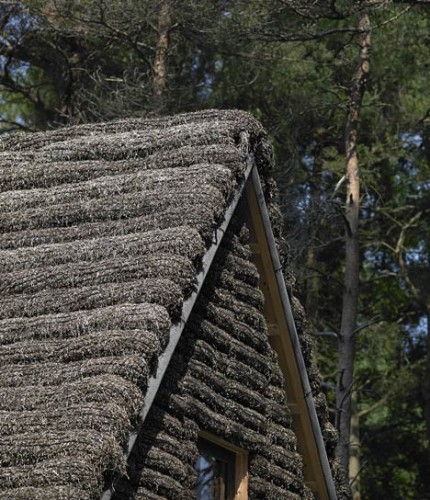 “Seaweed pillows were used as cladding for this holiday house on the Danish island of Læsø by architecture studio Vandkunsten and non-profit organisation Realdania Byg. The Modern Seaweed House revisits the traditional construction method in Læsø, where for many centuries trees were scarce but seaweed has always been abundant on the beaches. At one stage there were hundreds of seaweed-clad houses on the island but now only around 20 remain, which prompted Realdania Byg to initiate a preservation project.”
“Seaweed pillows were used as cladding for this holiday house on the Danish island of Læsø by architecture studio Vandkunsten and non-profit organisation Realdania Byg. The Modern Seaweed House revisits the traditional construction method in Læsø, where for many centuries trees were scarce but seaweed has always been abundant on the beaches. At one stage there were hundreds of seaweed-clad houses on the island but now only around 20 remain, which prompted Realdania Byg to initiate a preservation project.”
“The team enlisted Vandkunsten to design a new house that combines the traditional material with twenty-first century construction techniques. Seaweed is at the same time very old and very ‘just-in-time’, because it is in many ways the ultimate sustainable material, Realdania Byg’s Jørgen Søndermark told Dezeen. It reproduces itself every year in the sea, it comes ashore without any effort from humans, and it is dried on nearby fields by sun and wind. It insulates just as well as mineral insulation, it is non-toxic and fireproof, and it has an expected life of more than 150 years.”
Your Lifestyle Has Already Been Designed
“All of America’s well-publicized problems, including obesity, depression, pollution and corruption are what it costs to create and sustain a trillion-dollar economy. For the economy to be “healthy”, America has to remain unhealthy. Healthy, happy people don’t feel like they need much they don’t already have, and that means they don’t buy a lot of junk, don’t need to be entertained as much, and they don’t end up watching a lot of commercials.”
Read more: Your Lifestyle Has Already Been Designed. Thanks to Bori.
